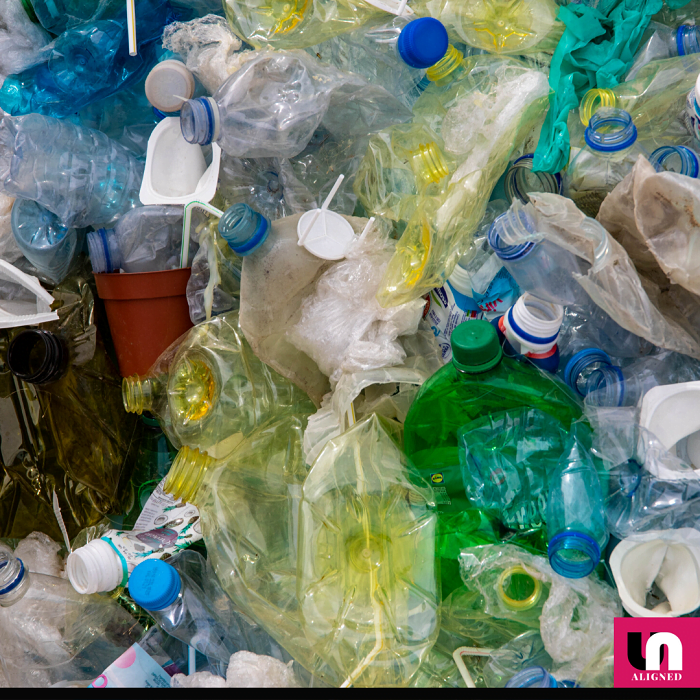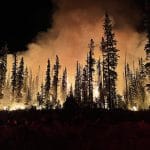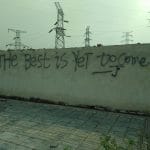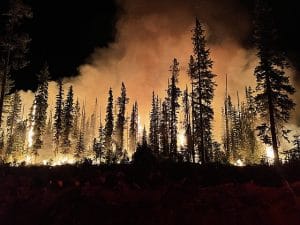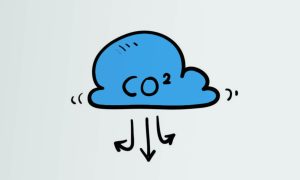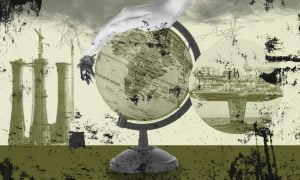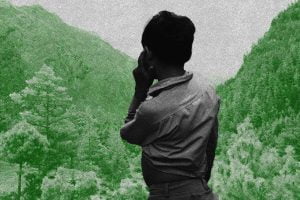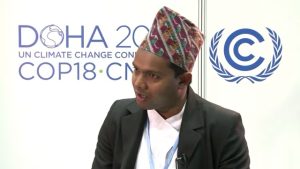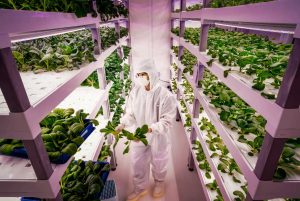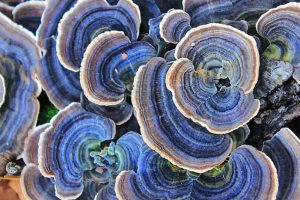Creation is rarely green
The forces of creation are often seen as a trinity. In philosophy we have the Hegelian dialectic of Thesis, Antithesis and Synthesis, where the synthesis then becomes a new thesis which in turn postulates another antithesis, thus propelling evolution in a perpetual thrust forward. In religion, we have, for example, the Hindu trinity made up of Brahma (the creator), Vishnu (the preserver) and Shiva (the destroyer).
For growth we need all three: without the first there would be no positive change, without the second, there would be no continuity, while without the third creation would be weighed down by a redundant past. In science also we have similar laws of growth, with every new phenomenon relying on past, present and future.
However, there is a fourth player; one who is forever overlooked and unfairly neglected. A beast that will take its revenge as an ally of entropy unless we acknowledge its worth and welcome it into the fold. The by-product, so to speak. If you have not guessed yet, I am referring to waste.
Different types of waste
Natural waste, the type that has been around for millennia, has found its meaning in the regenerative cycle of life. We breathe in oxygen and breathe out carbon dioxide, while trees help us by reversing the process. The food we consume and our very bodies go back to the earth enriching it with our nutrients. Artificial waste, however, has not been so lucky.
The products of our creative imagination, especially since the industrial revolution, have not been that holistic because our focus has been selfish and short sighted. We only calculated what is of benefit to us and we only focussed on the present time when doing so. Like Doctor Frankenstein, we have created a monster whose existence does not fit in with our ambitions and our hubris; but we ignore him at our peril.
Of the different types of waste, organic and biodegradable only constitute a problem when we create unnatural situations, such as intensive farming that requires herculean feats for the impacts to be washed away. Other forms are more toxic and moving them from A to B does not resolve the threat they pose. Nor will ignoring the problem lead to it going away, quite the contrary. We must learn how to always include that fourth element into the equation, otherwise it will come back to haunt us.
Nuclear waste, e-waste, chemical waste, gaseous waste… there are many different types. Recycling can help in some cases, but in many it cannot. I am not a scientist, but we should be striving to find sustainable solutions to our waste emergencies with the same vigour we are fretting to find a vaccine for COVID-19. In fact, the creation of a product should come ready with the waste resolution. The problem with the philosophy of crossing the bridge when we get to it is that by then it may be too late; if not for us, certainly for future generations.
Packaging: the pseudo-waste
One does not need to be a scientist, however, in order to resolve all waste issues; especially waste that is related to packaging. Unlike other types of waste, packaging is not a defunct item or a by-product; it is an add-on. All that is necessary is a bit of imagination and a lot of good will to deal with the problem.
In some cases, we are actually going backwards. When I was little, half a century or so ago, we used to put the empty milk bottles outside the door for the milkman to collect, while packaging was generally functional. Nowadays, instead, there is so much wastage: glass, paper, tin, plastic… And despite the good intentions of conscientious households who scrupulously divide waste into the right recycling bin, much of that is not recycled at all and ends up in landfill.
In the US, for instance, of all the waste produced in 2017, only 8.4% of it ended up getting recycled. The problem is not the motivation of consumers or a shortage of collection points, but rather the fact that the US does not have the appropriate facilities to recycle. A recent study by Greenpeace on plastics found that, apart from bottles, that tend to be regularly recycled, most other plastics finish up in landfill or are incinerated. Moreover, disposing of rubbish is not easy or cheap.
Even though disposal is costing us vast sums of money, it is becoming increasingly difficult to deal with. In Europe, for example, Portugal was one of the cheapest countries for waste processing and disposal, charging 11 euros per ton of rubbish, compared to a European average of 80 euros. However, last month Portugal suspended imports of trash until 2021 owing to it having reached capacity.
Exporting rubbish to poorer countries is also becoming harder. In 2017, China, a major importer of waste, banned all imports into the country and since then other Asia nations have been following suit. Clearly, the situation will come to a head unless we start taking the problem seriously.
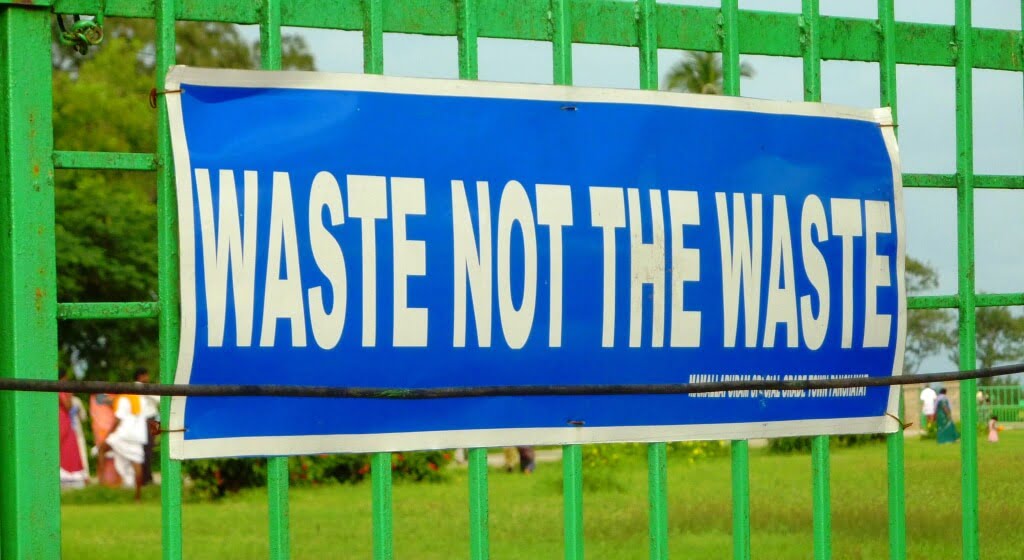
Some ideas on how we can avoid creating the problem in the first place:
Make building bricks:
Sometimes people fill plastic bottles with sand or soil and use them to build walls or even houses. So why not change the shape of our plastic packaging to facilitate such endeavours?
Products could come in compatible cubes, like Lego bricks that could then be used to build things, even furniture. They could be adapted to hold different products, be they liquid or solid. It really is not rocket science. Such a scheme could help considerably in turning a problem into an asset.
All it would take is for coordination amongst companies regarding the packaging they used and a bit of imagination on the part of packaging firms.
Transform it into art:
We could deal with some of our own waste packaging by transforming it into art; from a simple flower pot to a grand cathedral! Sounds crazy?
Well, an ex-monk actually did just that! Justo Gallego Martinez started building his cathedral in Mejorada del Campo a town not far from Madrid in October 1961 and he is still at it although it already looks amazing! Other artists have also created masterpieces using refuse.
Tire Art, for instance, sees old tires transformed into stunning sculptures. Nigerian university lecturer and artist Adeola Balogun is one of the most accomplished exponents of this art form. He creates “eclectic” pieces that sell for thousands of dollars.
Another famous tire artist is Yong Ho Ji, a South Korean famous for creating florid and imposing creatures: his works are truly outstanding!
Avoid it altogether:
Plastic- and container-free shops are sprouting in many cities and one can shop there without having to worry about the production or disposal of containers.
There are different varieties, you could take your own container or reuse the ones provided, but ultimately the goal is the same. Often, however, they deal with dried foods, but nevertheless, the range is growing as they are becoming more and more popular.
As individuals, we can find out if there are such shops near us and patronise them. As an organisation, we will invite more brands to sponsor such initiatives.
Eat it!
KFC is already providing edible coffee cups and edible bowls, as are other food chains. Again, there are different varieties, such as the totally tasteless containers made from potato starch. Dealing with hygiene issues is of course a problem, but some big companies such as WikiCell and Monosol are exploring and investing heavily in the technology.
There is a Zen story about a famous abbot being entertained in a monastery.
While he was eating his soup, he found the head of a snake in it and had the chef called to the table. “Look at this!” He said. “Oh, thank you!” Replied the chef and in a flash, he picked the head up and ate it. We too could learn to eat the evidence, so to speak!
Grow flowers:
As for the dumps that already exist, we should at least do our best to reduce their impact. Fresh Kills Landfill was the world’s largest landfill until it closed in 2001.
It was in Staten Island in New York City and it was a health hazard as well as an eyesore. Arrangements were then made for the area to be redeveloped into an environmental park. When completed, Freshkills Park, as it is now known, will be New York City’s second largest public park.
What are your thoughts on recycling? Have you got any useful ideas to share? Let us know and we will publish them in the next issue of The Gordian.



